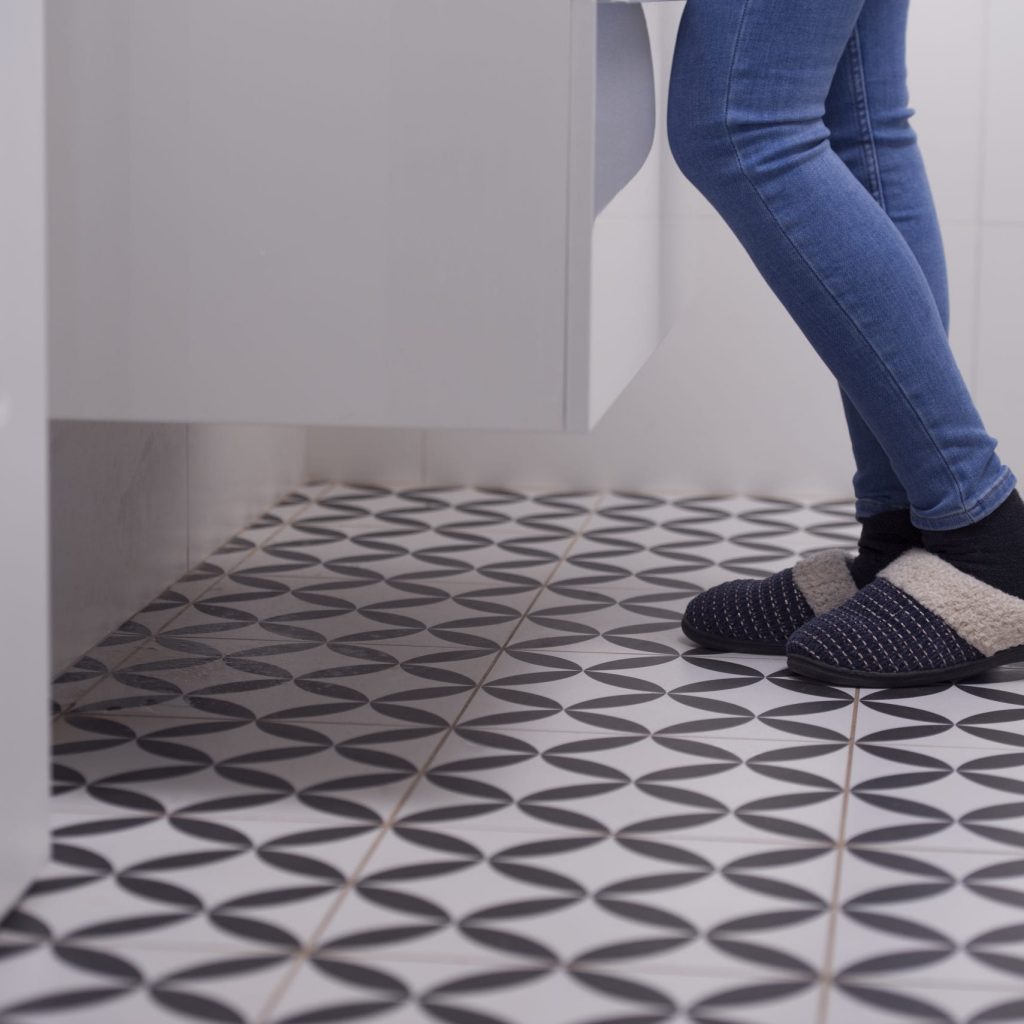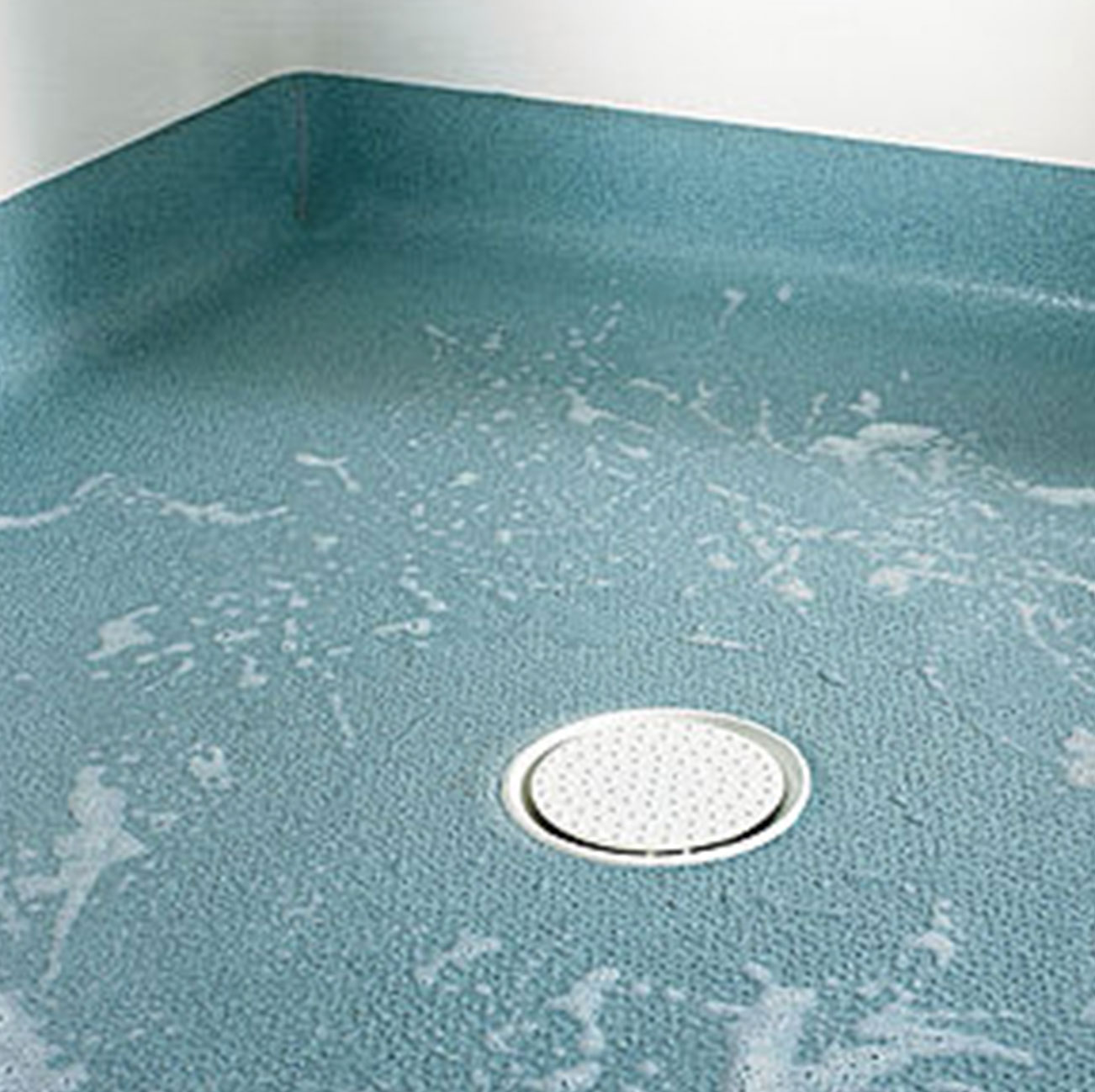Understanding Slip-Proof Bathroom Flooring: Slip Proof Bathroom Flooring

Bathrooms are often considered one of the most dangerous rooms in the house. Wet surfaces, soap residue, and spills create a slippery environment that increases the risk of falls. This is why slip-resistant flooring is crucial in bathrooms, ensuring safety for all ages.
Common Causes of Bathroom Slips and Falls
Slips and falls in bathrooms are common occurrences, often resulting in serious injuries. Understanding the common causes can help prevent these accidents.
- Wet Surfaces: Water, soap, and shampoo residue can create a slippery film on the floor, increasing the risk of slipping.
- Spills: Spilled liquids, such as shampoo, conditioner, and bath products, can quickly make the bathroom floor treacherous.
- Loose Rugs and Mats: Loose or improperly secured rugs and mats can become a tripping hazard, especially when wet.
- Uneven Surfaces: Cracks, holes, or uneven tiles can create an unstable walking surface, increasing the likelihood of slips and falls.
- Poor Lighting: Inadequate lighting can make it difficult to see potential hazards on the floor, increasing the risk of tripping or slipping.
Slip-Resistance Standards and Certifications
To ensure the safety of bathroom flooring, various standards and certifications have been established to measure slip resistance. These standards provide a quantifiable measure of a surface’s ability to resist slipping.
- Coefficient of Friction (COF): The COF is a numerical value that measures the friction between two surfaces. A higher COF indicates greater resistance to slipping. The COF is often measured using a device called a tribometer.
- ASTM International Standards: ASTM International is a globally recognized standards organization that sets standards for various industries, including flooring. The ASTM F462-17 standard specifically addresses slip resistance for flooring materials.
- National Floor Safety Institute (NFSI): The NFSI is a non-profit organization dedicated to promoting floor safety. They offer a certification program for slip-resistant flooring that meets their strict standards.
Types of Slip-Proof Bathroom Flooring

Choosing the right bathroom flooring is essential for both safety and aesthetics. Slip-proof flooring is particularly important in this high-moisture environment, minimizing the risk of falls and accidents. This section explores different types of slip-proof flooring materials, their advantages, disadvantages, and slip resistance ratings.
Types of Slip-Proof Bathroom Flooring
A variety of flooring materials can provide slip resistance in a bathroom setting. Each type has its own unique characteristics and suitability for different bathroom environments. The table below Artikels the key features of some common slip-proof bathroom flooring options.
| Flooring Type | Pros | Cons | Slip Resistance Rating |
|---|---|---|---|
| Tile | Durable, water-resistant, aesthetically versatile | Can be cold, grout lines require maintenance, potential for slipping on wet surfaces | COF (Coefficient of Friction) of 0.42 or higher is considered slip-resistant |
| Vinyl | Water-resistant, affordable, easy to maintain, various styles and colors | May not be as durable as tile, can be susceptible to scratches and dents | COF (Coefficient of Friction) of 0.42 or higher is considered slip-resistant |
| Stone | Natural beauty, durability, water-resistant | Can be expensive, requires sealing, may be cold to the touch | COF (Coefficient of Friction) of 0.42 or higher is considered slip-resistant |
| Rubber | Excellent slip resistance, comfortable underfoot, easy to clean | Can be prone to staining, may not be as aesthetically pleasing as other options | R-value (Resistance) of 10 or higher is considered slip-resistant |
Specific Examples of Slip-Proof Bathroom Flooring, Slip proof bathroom flooring
Specific examples of slip-proof flooring products within each category are highlighted below. These examples showcase unique features and benefits that cater to different bathroom requirements.
Tile
- Porcelain Tile: Known for its durability and water resistance, porcelain tile is a popular choice for bathroom floors. It comes in a wide range of colors, patterns, and textures, allowing for customization.
- Ceramic Tile: Ceramic tile is another durable and water-resistant option. It is typically more affordable than porcelain tile and offers a variety of styles and finishes.
- Textured Tile: Textured tile provides additional slip resistance due to its raised surface. This feature is particularly beneficial in areas prone to moisture, such as shower floors.
Vinyl
- Luxury Vinyl Plank (LVP): LVP is a durable and water-resistant option that simulates the look of wood or stone. It is available in various styles and colors, offering versatility in bathroom design.
- Luxury Vinyl Tile (LVT): LVT is similar to LVP but comes in square or rectangular tiles. It offers excellent water resistance and durability, making it suitable for high-traffic bathroom areas.
- Vinyl Sheet Flooring: Vinyl sheet flooring is a budget-friendly option that is easy to install and maintain. It is available in various patterns and colors, providing a range of aesthetic choices.
Stone
- Granite: Granite is a durable and elegant stone that is naturally slip-resistant. It is a popular choice for bathroom floors due to its beauty and durability.
- Marble: Marble is a luxurious and elegant stone that is also slip-resistant. It requires regular sealing to maintain its beauty and prevent staining.
- Slate: Slate is a natural stone with a unique texture that provides excellent slip resistance. It is available in a range of colors and patterns, adding a rustic feel to the bathroom.
Rubber
- Rubber Tile: Rubber tile is a durable and slip-resistant option that is often used in commercial bathrooms and fitness centers. It is easy to clean and maintain, making it a practical choice for high-traffic areas.
- Rubber Sheet Flooring: Rubber sheet flooring is a versatile option that can be installed in various bathroom settings. It provides excellent slip resistance and is comfortable underfoot.
Slip proof bathroom flooring – Slip-proof bathroom flooring is crucial for safety, especially for families with young children or elderly members. A popular choice for this purpose is tile, and dark grey tiles can offer a sleek and modern look. For inspiration on how to achieve a sophisticated dark grey floor bathroom, check out this article on dark grey floor bathroom design.
While dark grey tiles can be stylish, remember to choose a textured surface to ensure good grip and prevent slipping, especially when the floor is wet.
Slip-proof bathroom flooring is crucial for safety, especially for families with young children or elderly individuals. However, even the most durable flooring can sustain damage, requiring repairs. If your bathroom floor needs a makeover, consider exploring options like dc fix bathroom floor solutions, which can restore its appearance and functionality.
Once the floor is repaired, remember to choose slip-proof materials for added safety and peace of mind.